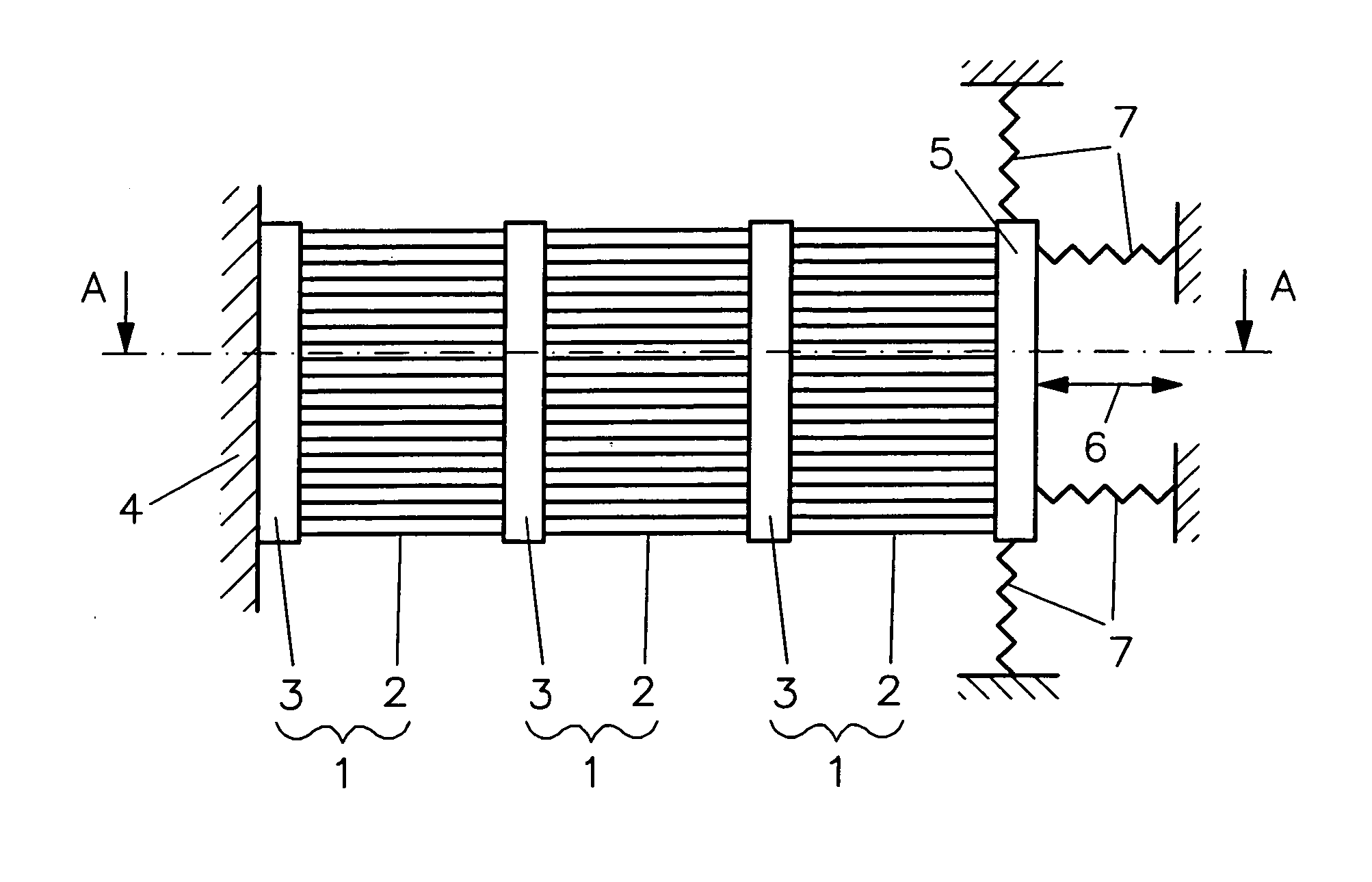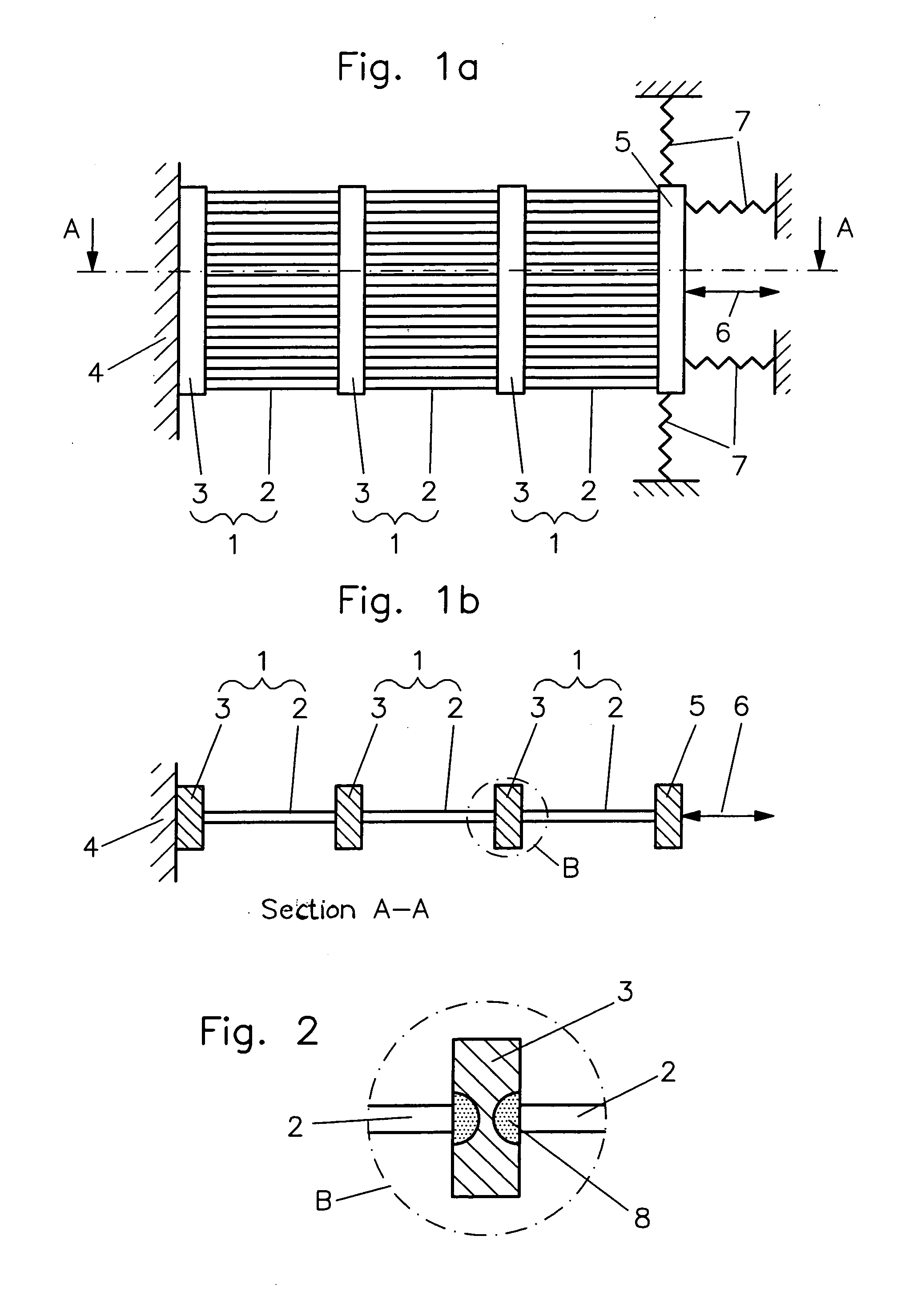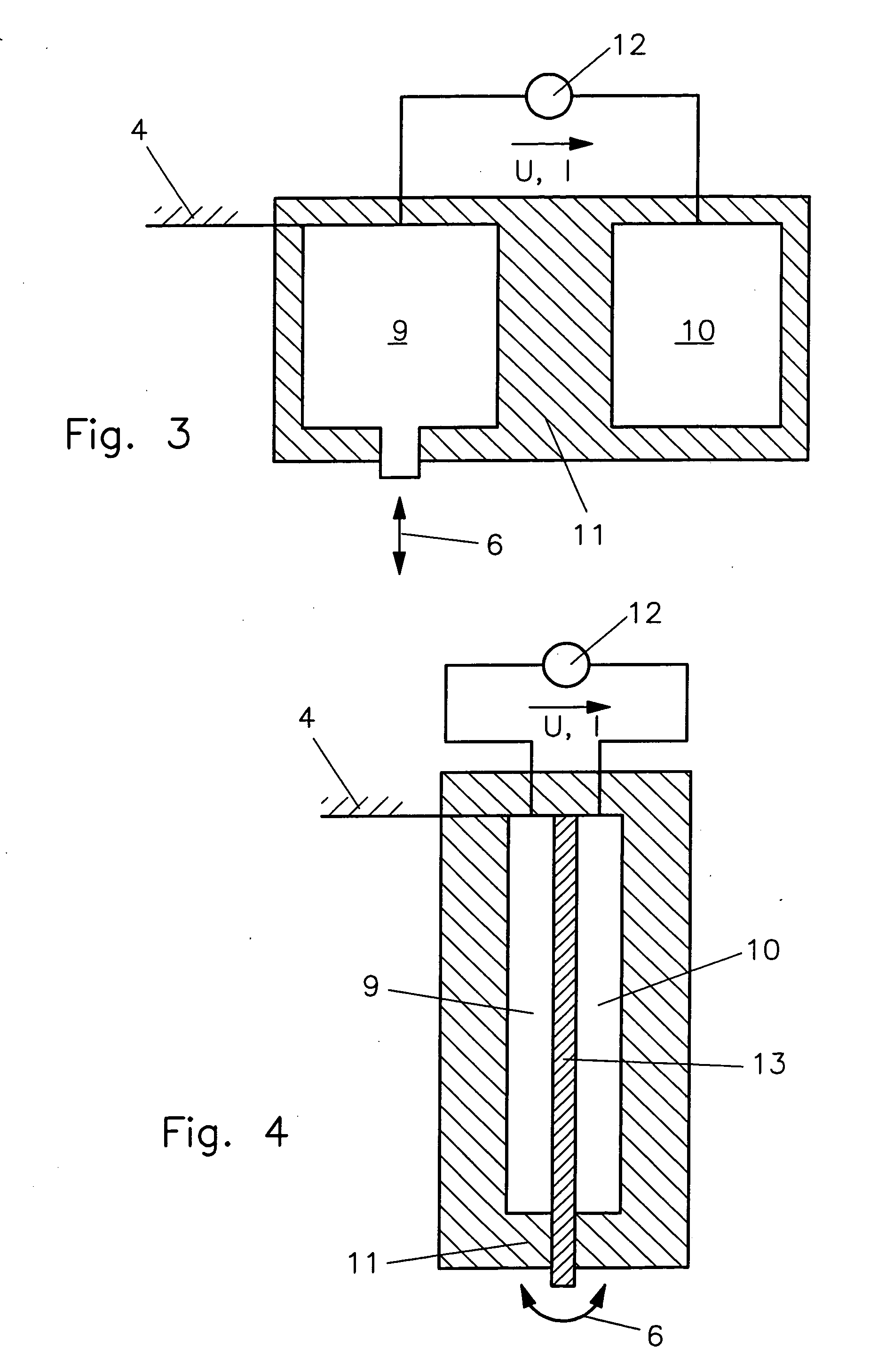Actuator on the basis of geometrically anisotropic nanoparticles
a nanoparticle, geometric anisotropic technology, applied in the direction of piezoelectric/electrostrictive device details, generators/motors, electrostatic generators/motors, etc., can solve the problems of changing the shape of nanoparticles and the lattice spacing, and achieve the effect of optimizing the utilization of effects and significantly increasing actuator rigidity
- Summary
- Abstract
- Description
- Claims
- Application Information
AI Technical Summary
Benefits of technology
Problems solved by technology
Method used
Image
Examples
Embodiment Construction
[0052]The core part of the invention, that is, the active electrode, is shown in FIGS. 1a and 1b wherein FIG. 1b is a cross-sectional view of the active electrode taken along line A-A of FIG. 1a. The active electrode consists of several actuator layers 1 comprising a plurality of CNTs 2 arranged parallel to one another and webs 3 arranged orthogonally to the CNTs. In the embodiment shown, the active electrode is connected with one end by means of a web to a solid support structure 4 and, with its free end, which is preferably also formed by a web in the form of an end member 5, executes the actuator actuation 6. Furthermore, FIG. 1 shows the elastic elements 7 for pretensioning a compression actuator and for guiding the webs 3.
[0053]The CNTs are arranged in the active electrode of the shown embodiment not in clusters but preferably in a plane parallel to one another (see FIG. 1b). In this way, uninhibited access of ions of the electrolyte is ensured, which substantially reduces poss...
PUM
 Login to View More
Login to View More Abstract
Description
Claims
Application Information
 Login to View More
Login to View More - R&D
- Intellectual Property
- Life Sciences
- Materials
- Tech Scout
- Unparalleled Data Quality
- Higher Quality Content
- 60% Fewer Hallucinations
Browse by: Latest US Patents, China's latest patents, Technical Efficacy Thesaurus, Application Domain, Technology Topic, Popular Technical Reports.
© 2025 PatSnap. All rights reserved.Legal|Privacy policy|Modern Slavery Act Transparency Statement|Sitemap|About US| Contact US: help@patsnap.com



